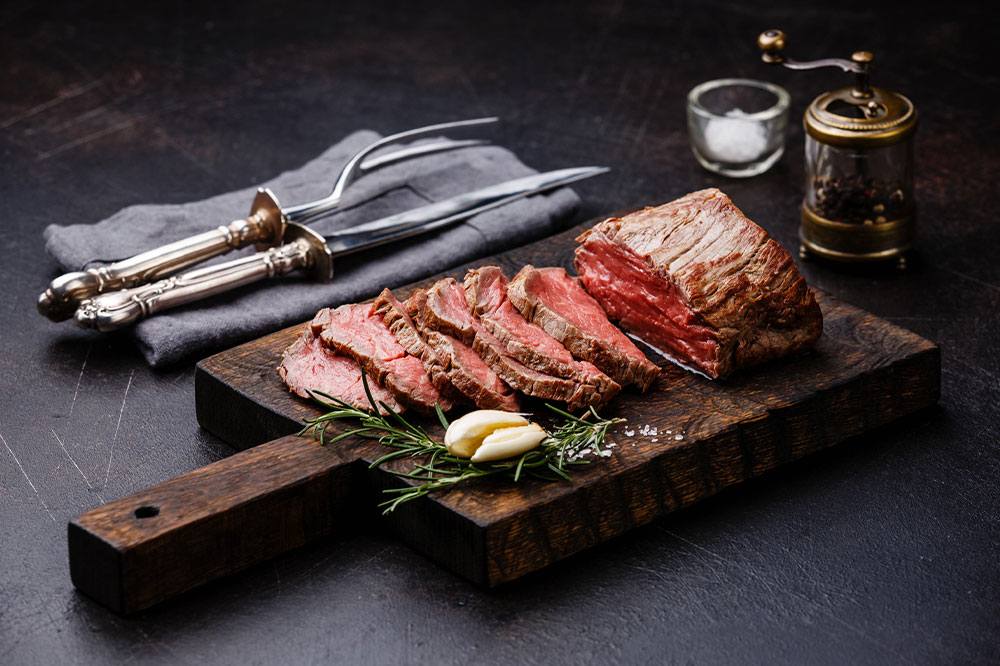
Best Foods to Improve Blood Count and Circulation
For the body to function optimally, it is vital to have a stable blood count and good blood circulation. Blood count refers to the total amount of red blood cells (RBCs), white blood cells (WBCs), and platelets in the blood. Of these, the count of the RBCs and platelets should not drop below the normal range. A low RBC count can cause anemia, while a low platelet count can result in internal bleeding.
Foods that help improve blood count
A natural way to boost blood count is to include certain beneficial foods in the meal plan. The following foods help in raising and maintaining RBC and platelet numbers and preventing complications:
Red meat
Red meats like beef, poultry, and liver are rich in iron, an essential element for producing RBCs. These foods also boost hemoglobin levels in the blood, which are crucial in supplying oxygen throughout the body.
Spinach
This green leafy vegetable is a good source of folic acid (vitamin B9) and iron, which are vital for maintaining RBC levels. Spinach also helps increase platelet count to some extent.
Dairy products
Dairy products, such as milk and cheese, can help stabilize blood count. They contain vitamin B12, which is critical for creating RBCs and platelets in the blood. This vitamin is also essential for the cognitive development and maturation of children.
Sweet potato
Sweet potatoes are packed with vitamin A, which is required for better absorption of iron into the blood. So, it is safe to say that vitamin A and iron work together to promote blood count.
Black-eyed peas
Black-eyed peas are packed with folic acid, a form of folate. Folate is essential for the multiplication of cells in the body. In other words, it helps increase RBC and platelet count. Unsurprisingly, anemia is linked to low folic acid levels in the body.
Pumpkin
Like sweet potato, pumpkin contains loads of vitamin A, which can significantly increase the production of platelets. Besides providing this benefit, it improves immunity and boosts eye, skin, and heart health.
Wheatgrass
Wheatgrass is the freshly sprouted first leaves of the wheat plant. It contains vitamins, amino acids, and minerals like calcium, sodium, potassium, magnesium, and phosphorous. Fresh wheatgrass juice can improve hemoglobin, RBC, and platelet levels.
Kiwi
This exotic fruit is the latest addition to the foods that increase platelet count. Although no scientific evidence supports kiwis’ benefits, doctors often recommend kiwis for dengue patients with a low platelet count. It is a good source of vitamin C and potassium.
Foods that help improve blood circulation
Poor blood circulation can have many reasons, including anemia, plaque buildup, blood clots, or narrowed blood vessels. People with low blood circulation may experience chest pain, muscle cramps, cold fingers and toes, numbness, bulged veins, and swelling. Some foods that help improve blood circulation are:
Pomegranate
This juicy red fruit with tiny seeds is loaded with antioxidants and nitrates that can help boost blood circulation. It enables the blood to carry more oxygen and nutrients to the muscles while restricting the formation of blood clots.
Cayenne pepper
Cayenne pepper contains capsaicin, a phytochemical that can help the arteries work efficiently and maintain normal blood pressure. This spicy pepper improves blood vessel strength and prevents plaque buildup.
Beets
Beets are high in nitrates, which are converted into nitric oxide in the body. Nitric oxide helps expand the blood vessels, improving blood flow to the tissues and organs. Experts recommend drinking beet juice early morning or an hour before breakfast.
Fatty fish
Fatty fishes like salmon and mackerel are excellent sources of omega-3 fatty acids. These fatty acids help stimulate the release of nitric oxide from the lining of blood vessels, increasing blood flow and reducing blood pressure. Omega-3 fatty acids also help prevent plaque buildup in the arteries and reduce the risk of blood clot formation.
Citrus fruits
Citrus fruits like oranges and lemons are not only rich in vitamin C but also antioxidants. These fruits help decrease inflammation in the body, which, in turn, reduces stiffness in the arteries, allowing blood to circulate efficiently.
Berries
Berries are rich in anthocyanins, an antioxidant beneficial for blood vessel health. Anthocyanins protect the arteries against stiffening and shield their walls from damage. Additionally, they boost the release of nitric oxide, which positively impacts blood flow. Some common varieties of berries to include in the nutrition plan are blueberries, raspberries, cranberries, blackberries, and strawberries.
Garlic
Garlic is a well-known immunity-boosting food for managing various health conditions. It contains allicin, a sulfur-containing compound that promotes increased blood flow in the tissues.
Turmeric
This golden yellow spice has anti-inflammatory properties and can help widen blood vessels. Its magic ingredient, curcumin, stimulates nitric oxide production and reduces oxidative stress. One can include turmeric in their meals to improve blood flow naturally.
Grapes
Grapes are rich in antioxidants that keep blood vessels relaxed, improve blood flow, and support heart health. People who eat grapes regularly are less likely to suffer from blood clots.
Avocados
Avocados are a great source of monosaturated fats that help lower bad cholesterol and prevent the arteries from clogging, ensuring smooth blood circulation. L-carnitine, an amino acid in avocados, promotes the production of nitric oxide, which relaxes the blood vessels.
Left untreated, both low blood count and impaired circulation can prove fatal. While healthy foods can manage these problems, they may not be helpful in severe cases. Therefore, those with severe blood flow or blood count issues may visit a doctor to develop a treatment plan. Depending on the situation, the health expert may recommend treatment options to boost nitric oxide levels and relax arteries. However, these may come with side effects. Healthy nutrition and lifestyle changes can help improve several other body functions and conditions as well.


